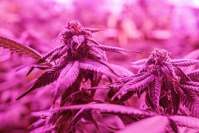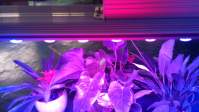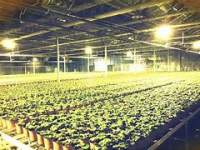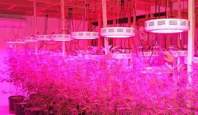Would you choose LED plant lights for indoor planting? It must be a pit to avoid!
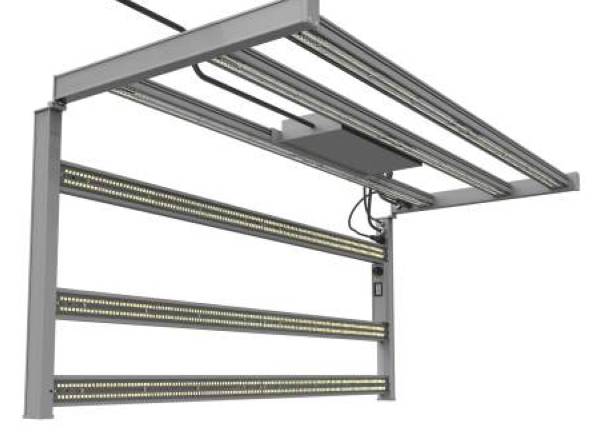
Introduction to the core parameters of LED plant lights:
Photosynthetic active radiation PAR (Photosynthetic Active Radiation) The specific wavelength range used by plants for photosynthesis is (400-700nm), which is called photosynthetic active radiation. There are two label units: One is expressed by photosynthetic irradiance (w/ m2), mainly used for generalized research on photosynthesis of sunlight. The second is expressed by the density of photosynthetic photon flux PPFD (umol/m2s), which is mainly used for the study of plant photosynthesis by artificial light sources and sunlight. This method of using the photon flux radiated to the surface of the plant per second is to express the radiation ability of the radiation source, which is called the PPF_PAR method. PAR accounts for 50% of the total solar radiation. It should be noted that the unit of photosynthetic irradiance does not reflect the influence of wavelength.
PPF: Photosynthetic Photon Flux refers to the number of micromoles of photons radiated per second from an artificial light source in the wavelength range of 400-700nm. The unit is umol/s.
PPFD: Photosynthetic Photon Flux Density (Photosynthetic Photon Flux Density) corresponds to the number of micromoles radiated by the light source per square meter per second. The unit name is umol/m2s, which is the concept of density. PPFD is the PPF expressed in one square meter. PPFD is a physical quantity related to the radiation distance, which is inversely proportional to the square of the radiation distance. 1PPFD means that the number of photons per second of 1 micromole radiates on a surface of 1 square meter. How big is 1umol/m2s (PPFD)? It means that there are 6 photons in 10 square nanometers.
YPF: Yield Photon Flux (Yield Photon Flux) refers to the number of micromoles of photons radiated per second in the wavelength range emitted by artificial light sources, and the unit is umol/s. The generally considered wavelength range is 360-760nm. For the LED light source, the wavelength range is set at 380-800nm.
YPFD: produced photon flux density (YieldPhotonFluxDensity), and YPF corresponds to the number of micromoles of radiation per square meter per second, the unit is umol/m2s, which is the concept of density.
YPFD means YPF in the range of one square meter.
YPFD is a physical quantity related to the radiation distance, which is inversely proportional to the square of the radiation distance.
YPFD can more accurately express the light quantity of LED plant light quality.
The difference between PAR and PPFD, PAR is a physical concept, and PPFD is a unit of physical concept.
The relationship between PPFD and PPF: PPFD is the basic quantity derived from planting process parameters, and PPF is the most important parameter for lamp manufacturing.
led plant light, would you choose?
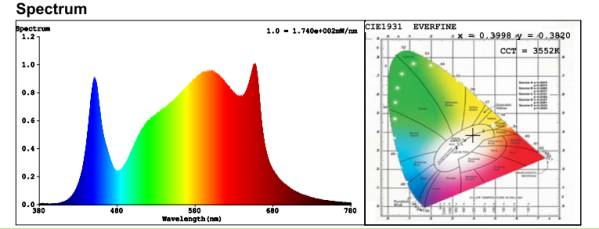
What is a good led plant light! My definition is: six elements, one is indispensable
1. Effective, the most important thing is to include two points, a good spectrum, suitable or higher and uniform illumination PPFD:
The spectrum that can be adjusted is the most effective spectrum, and the multi-channel plant light can control the spectrum.
Spectrum: The light recipe of plants. Every plant lamp manufacturer claims that its own spectrum is the most effective. Here I want to talk about the good spectrum and the not-so-good spectrum (at least there must be extremely red light in the 660nm), the planting effect difference is less than 10%. Now there is no most effective spectrum, the spectrum is good or bad, what do you need most, the vegetables you grow, need a good taste, then you can add some UV purple light, if you need to change the flowering cycle, you may need to add some far Infrared FR730. A good spectrum should be adjustable, and it should contain multiple adjustable channels, UV channel, blue and white light channel, red light channel, far-red light channel, we can according to plant species, different stages of plant planting, Adjust the spectrum reasonably. Adjusting the spectrum, this seems to be a bit difficult.
PPFD: In fact, PPFD is the most important data in plant lights. It is more important than the spectrum. Only a suitable PPFD can have a good harvest. Generally, indoor planting is related to light, which is insufficient light or insufficient power. . Higher PPFD can reduce the light by dimming, while low-light products can no longer increase the illuminance.
Generally speaking, the average PPFD for leafy vegetable planting needs to be 250umol/m2/s, the seedling stage of tomato planting needs to be 150umol/m2/s, the vegetative growth period needs to be 400-600umol/m2/s, the flowering and blooming harvest period It needs light at 600-1200umol/m2/s, during the tomato growth period and flowering period, you can add some extra carbon dioxide. The growth stages of cucumbers and peppers are basically the same as tomatoes. Adding some carbon dioxide can also increase the yield.
Uniformity of illumination: It can also be said that the uniformity of PPFD, the higher the uniformity, the better, the uniformity is related to the height of the suspension, the higher the suspension height, the uniformity of light will increase, but the light loss will increase
After the optimization of light uniformity, the LED plant light will not produce hot spots in the center at a suitable suspension height
2. High efficiency and energy saving:
The lighting effect of LED plant lights must reach 2.7umol/J, but almost all plant lights claim 2.7umol/J or higher. This requires our careful analysis and identification. Generally, the credibility of large brand plant lights is higher. If it is not a brand, we need to know the brand of LED lamp beads (preferably with a specific model) and the number of lamp beads, which can also help identify the credibility of the light effect. Generally speaking, the same is used. For lamp bead models, the more the number of lamp beads, the higher the efficiency.
3. Safe and reliable:
In fact, safety should be the first priority. Lamps should meet the safety requirements of all countries in the world. In addition to meeting safety requirements, they also need to be reliable and reliable to ensure long-term operation. LED lights will also generate heat and temperature rise is also a factor. A very important indicator, the temperature is very high, it will seriously affect the life of the plant light, the heat dissipation capacity is also an important indicator of the plant light.

4. Long life:
As mentioned above, low temperature rise is a way to ensure long life. Use good components, especially power supplies, which are relatively easy to damage. You should try to use brand-name power LED plant lights, such as Yaorong Technology's power supply; For lamp beads, you should also choose to use plant lights made by Yaorong Technology in Shenzhen, China.
5. Luminous and comfortable:
This can be said to have nothing to do with plants, but the plant planting environment may also be our temporary working environment. This place also needs human-friendly light. Under such light, we can also see the growth status of plants and discover diseases and insect pests in time. The problem. For plant growing areas where UV lamps are used, the UV lamps should be turned off before entering the plant growing areas.
6. Intelligent control:
Intelligent control of light and spectrum includes and according to different plants, different growth stages, different planting requirements, control of light time, light gradual conversion to control, spectral gradual conversion control, etc.
With the development of technology, the plant supplement light has been well known by more and more people. The greenhouse has a good effect on the nursery, growth, and flowering of any crop. Now it is not only limited to being used in greenhouses by agricultural planting, but also widely used in many home plantings, to supplement light to crops in cloudy rain or in an environment with weak shadows. However, there are many types of plant supplementary lights. When choosing supplementary lights for home planting, one thing must be paid special attention to.
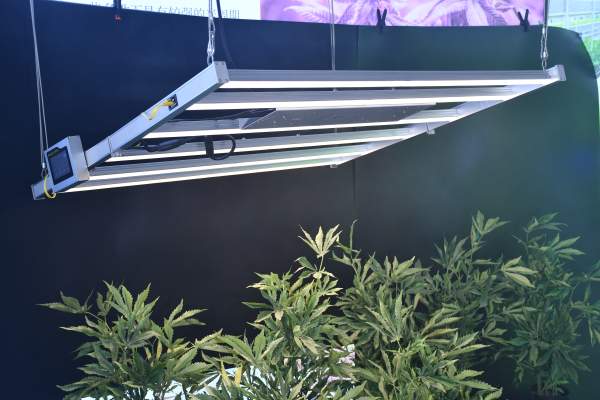
According to the absorption and utilization of sunlight by plant photosynthesis, people have developed red, blue and full-spectrum plant supplement light. Many greenhouse growers will choose red and blue light supplement light when supplementing light, because red and blue light supplement light has the most obvious effect on plant growth, which can promote the growth of stems and leaves and flowering and fruit, and it also has bright colors for flowers. And prevent the effect of protruding.
The red and blue light supplement light has the best effect on plants, but because of its light color, it is best not to choose the red and blue light spectrum when planting supplement light in the home. The red and blue light fill light is a pink light. People will feel dizzy, nauseous and unwell in this environment for a long time. The red and blue light fill light in the greenhouse is mostly used when no one is working in the shed. And because the color of the light is pink, it is easy to cause misunderstanding and adverse effects when used indoors. Therefore, it is not recommended to use red and blue lights for indoor planting. The full-spectrum supplementary light also has a good effect on the supplementary light of plants, so you can choose to use the full-spectrum plant supplementary light when growing crops indoors.


